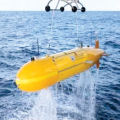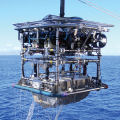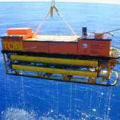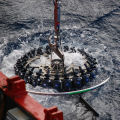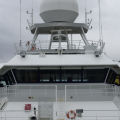Expedition technology
|
Our expedition is equipped with cutting-edge undersea technology to reveal the secrets of the Cayman Trough. Please visit the links below for further details of our equipment and vehicles, many of which are being taken close to their limits to reach the extreme depths of the volcanic rift. |
|
Autosub6000: a robot submarine that is not controlled or attached to the ship, Autosub6000 can map the seafloor and hunt for deep-sea vents on its own in the abyss. Autosub6000 is the latest and most advanced in a series of autonomous underwater vehicles developed by engineers at the National Oceanography Centre, Southampton. | |
|
HyBIS: our eyes and arms on the seafloor, HyBIS is remotely-controlled from the ship, carrying cameras into the depths and bringing samples back for us - but at a fraction of the operating cost of traditional remotely-operated vehicles. HyBIS is a new concept in marine science vehicles, developed by team member Bramley Murton and Hydro-Lek Ltd. | |
|
TOBI: an upgraded twenty-year veteran of surveying the ocean floor, TOBI (the Towed Ocean Bottom Instrument) is towed behind the ship a few hundred metres above the seafloor, mapping it in detail with its sonar system and other instruments. | |
|
CTD: the mainstay of oceanographers worldwide, our tricked-out CTD not only measures the currents and circulation of the Cayman Trough, but also carries sensors to detect deep-sea vents on the seafloor below, and collects samples of the mineral-rich water gushing out of them. | |
|
RRS James Cook: Britain's newest research vessel and the pride of our science fleet, the Cook is equipped with the latest sonars and sensors for probing the deep ocean below us - as well as being our floating laboratory and home in the blue yonder. |
People
Meet our team aboard the ship: biologists and geologists, professors and students, engineers and mariners.
Who are we?

